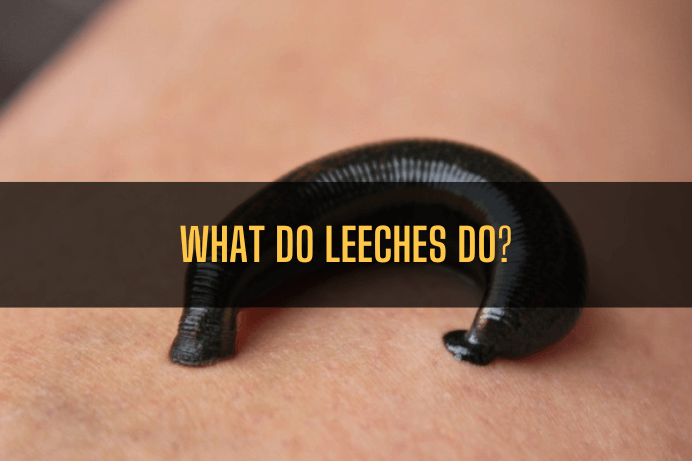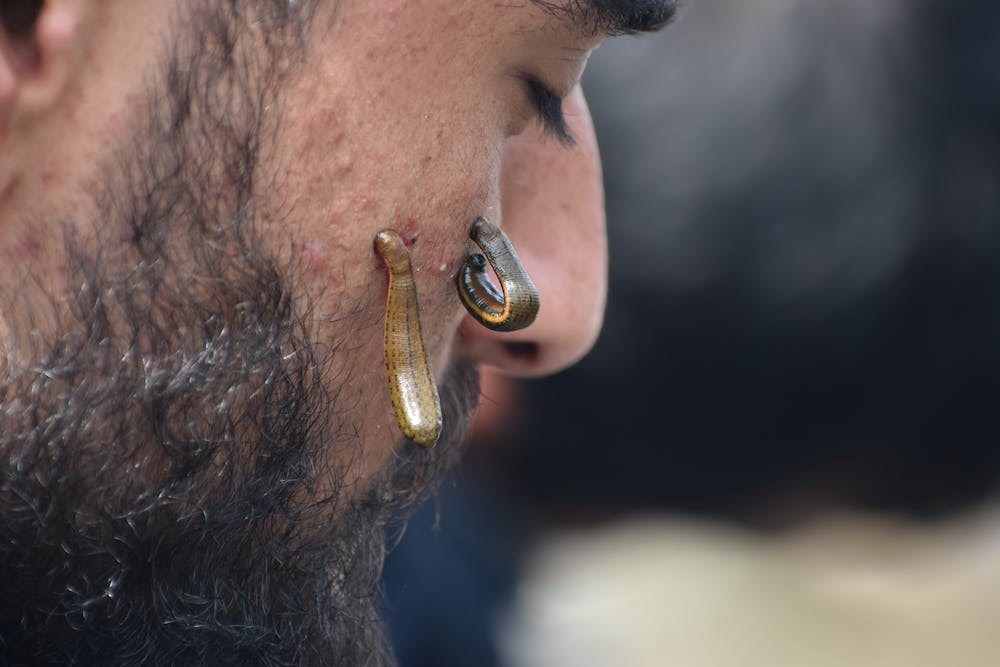What do leeches do?
Overview
Leeches have been used in medicine since ancient Egyptians to cure infections, skin illnesses, nervous system anomalies, and dental issues. They are primarily utilized in microsurgery and plastic surgery today. Leeches secrete peptides and proteins that prevent blood clots, which explains why. The term “anticoagulants” also applies to these secretions. This helps wounds heal by keeping blood flowing to them.
Leech therapy is currently experiencing a resurgence due to its straightforward and affordable method of avoiding difficulties.
Leech Therapy
-
Anatomical description
Three small rows of teeth are located in each jaw of a medicinal leech. They use their teeth to penetrate a person’s skin before injecting anticoagulants through their saliva. The patient receiving therapy is then permitted for the leeches to draw blood for 20 to 45 minutes. Up to 15 millilitres of blood per leech is what this translates to. From Hungary or Sweden, medicinal leeches are most frequently imported.
Leech treatment is an option in a variety of circumstances. People who could gain from this procedure include those who are undergoing cosmetic surgery and run the danger of losing some of their soft tissue, people who have been diagnosed with heart disease, and those who are at risk of losing a limb due to the complications of diabetes.
Additionally, suggested for the treatment of blood clots and varicose veins.
Leech therapy is unsuitable for people with anemia, blood clotting issues, or damaged arteries. Additionally, it is typically advised that pregnant women and children under 18 stay away from it.
Leech therapy application in the medical field
Live leeches stick to the target location and draw blood throughout the procedure. They expel the peptides and proteins that thin the blood and stop it from clotting. The circulation is enhanced, and tissue death is avoided. The little, Y-shaped sores that the leeches leave behind typically heal without leaving a scar.
Blood clots can be broken up, and leeches boost circulation. It is not surprising that they can be utilized to treat cardiovascular disease and circulation diseases.
- arthritis
- skin problems
- Hemorrhoids
- Varicose veins
- Hypertension
According to clinical investigations, leech therapy may be a suitable treatment for osteoarthritis, a prevalent joint ailment. The leech’s saliva has analgesic and anti-inflammatory qualities that lessen pain and sensitivity in the region of the injured joint.
Now let’s analyze how leech is helpful in heart disease and cancer.
Heart problems
Because leech therapy can reduce inflammation and increase blood flow, people with heart problems frequently utilize it. Leech therapy has gained acceptance as a viable alternative treatment for those suffering from vascular problems and diseases in recent years.
Cancer
Because leech saliva contains unique enzymes and platelet inhibitors, leech therapy for cancer is currently being investigated.
Leech therapy has been demonstrated to lessen the effects of lung cancer, even though it is not indicated for patients with specific blood malignancies. Animal research has also shown that giving mice a direct injection of leech saliva can help stop the colonization of cancer cells.
Does leech is helpful in diabetic treatment?
Numerous issues might arise as diabetes progresses. These issues can result in vascular disorders that reduce or obstruct blood flow to the hands, feet, toes, and fingers. The damaged tissue may die if the blood supply is significantly reduced. Among people with diabetes, this is the main reason for amputations. For millions of people worldwide, losing a finger or an entire limb due to diabetes complications is a serious worry.
Increasing circulation to the damaged tissues without increasing the danger of blood clots is the most efficient strategy to stop this process. Leech therapy may be helpful, according to research.
Leech saliva contains Hirudin, which thins the blood and prevents clotting. Hirudin can help ease pressure on the heart and circulatory system by thinning blood because persons with diabetes typically have thicker blood in circumstances where Hirudin has been used to treat.
Now we will analyze how leech is helpful in cosmetics
After facial reconstruction surgery, leeches have gained popularity for protecting soft tissue and accelerating healing. Leech therapy has been demonstrated to boost the likelihood of successful outcomes in reconstructions involving: both old and new case studies.
- nose
- breast
- face
- digits (fingers and toes)
Reducing blood clotting caused by leech therapy during and after these operations promotes a more complete and natural healing process.
Some people use leech therapy to address baldness, scalp hair loss, and its benefits for blood circulation.
Our Last Words
Some people find the idea of leeches being utilized in contemporary medicine repugnant. But more and more studies are demonstrating a rationale
for the long-standing use of leeches in medicine. The treatment may have even more applications in daily life than we could have imagined as we learn more about the unique qualities of leech saliva.


